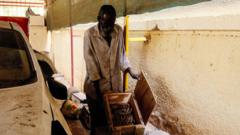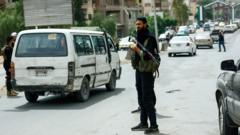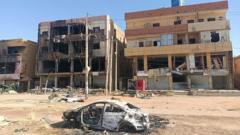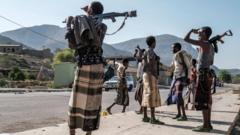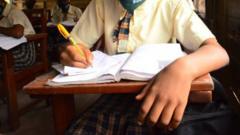As Syria shifts from the shadows of its civil war, many citizens are committed to safeguarding artifacts from a revolution that evolved into a prolonged conflict spanning nearly 14 years. This effort is aimed at not just remembrance but also as a powerful lesson against the recurring violence. Residents of towns like Kafranbel are gathering banners, posters, and remnants of the past—from torture devices to fully preserved prisons—to depict the harrowing tales of resilience and resistance against the oppressive regime of Bashar al-Assad.
Syria's Struggle: Preserving the Painful Legacy of a 14-Year Conflict

Syria's Struggle: Preserving the Painful Legacy of a 14-Year Conflict
In light of recent developments, Syrian citizens are working diligently to memorialize their turbulent history and ensure that past horrors are never forgotten.
Mutassim Abdulsatir, a former inmate of the notorious Sednaya prison, reflects on the pain of memory. "We may wish to forget," he asserts, "but I believe these artifacts must remain to serve as a warning, both in Syria and beyond." Amidst the dusty remnants of the prison, he meticulously collects nooses, envisioning their display as a somber exhibition that speaks to the atrocities faced by countless detainees. As a collective longing for justice and closure thrives, efforts to document and preserve this chapter of history underscore the resilience of the Syrian people and their fight for dignity.
In Kafranbel, activists are also striving to ensure that the "voices of the oppressed" echo through the artifacts they preserve. The ongoing movement embodies a broader hope for accountability, as salvaged documents and technological remnants may play a constructive role in future pursuits of justice, ensuring the past informs a more stable future for Syria.
It remains to be seen how these efforts will shape national memory and contribute to a future where the lessons learned resonate beyond Syria’s borders.
In Kafranbel, activists are also striving to ensure that the "voices of the oppressed" echo through the artifacts they preserve. The ongoing movement embodies a broader hope for accountability, as salvaged documents and technological remnants may play a constructive role in future pursuits of justice, ensuring the past informs a more stable future for Syria.
It remains to be seen how these efforts will shape national memory and contribute to a future where the lessons learned resonate beyond Syria’s borders.

